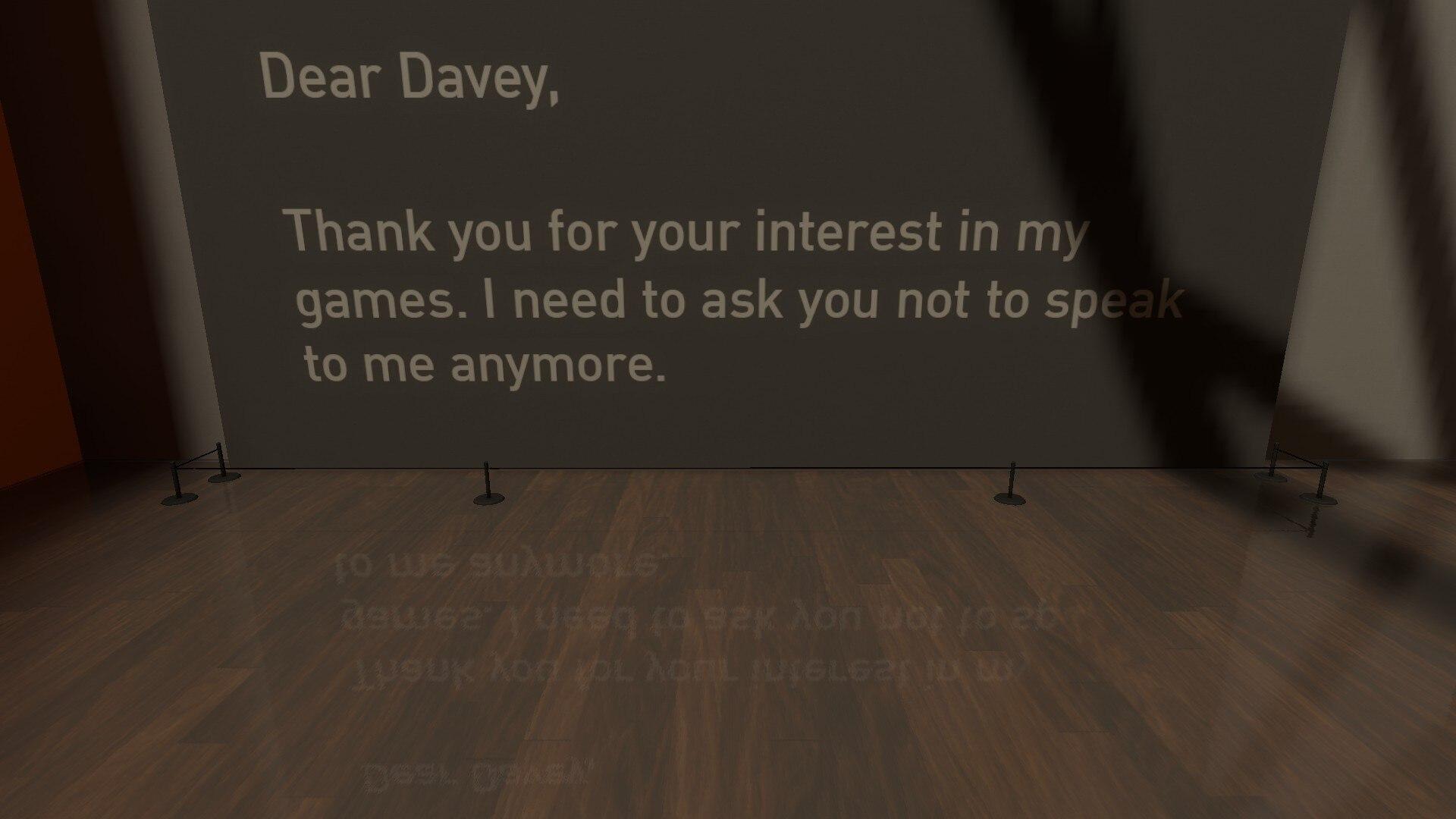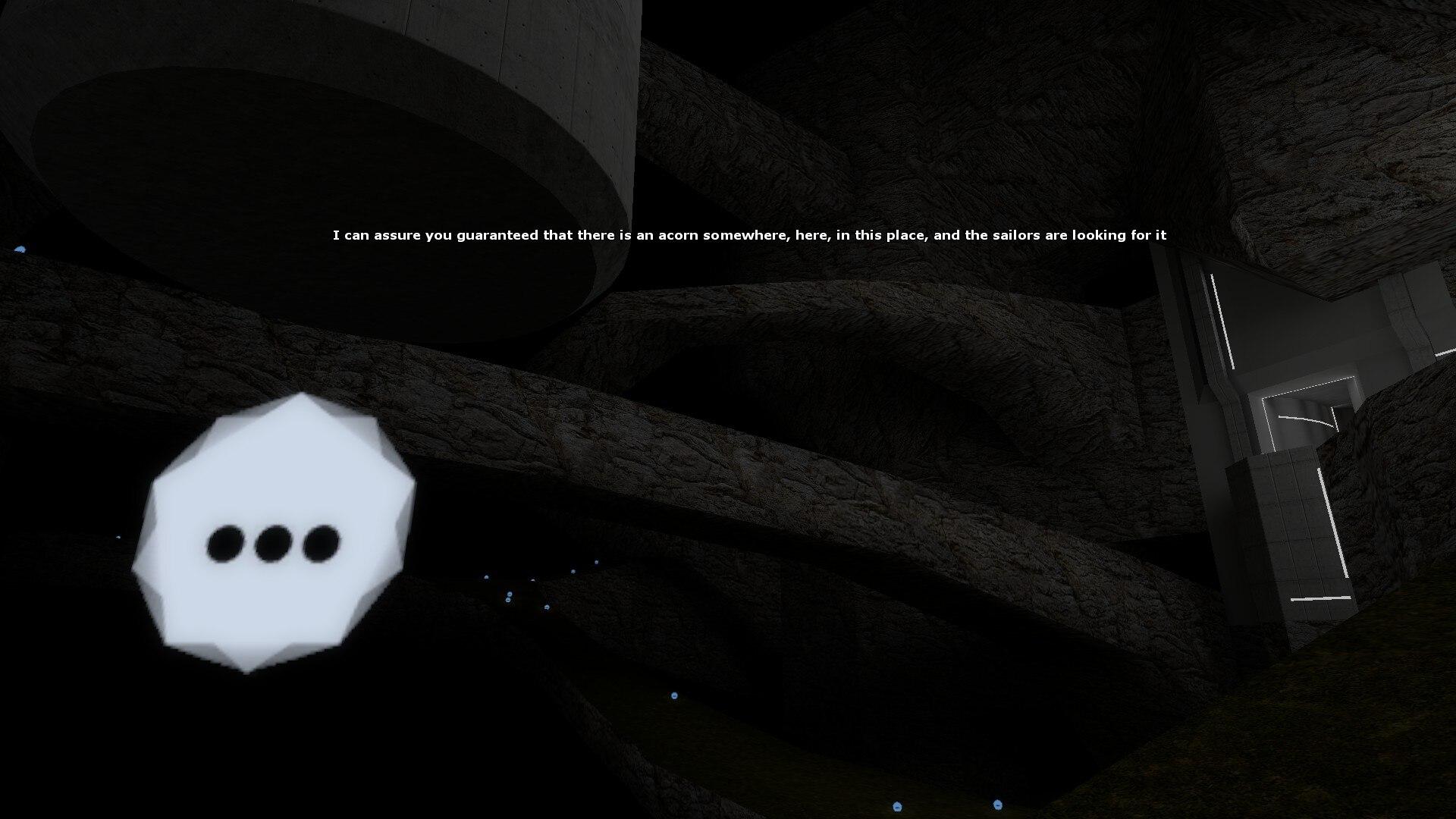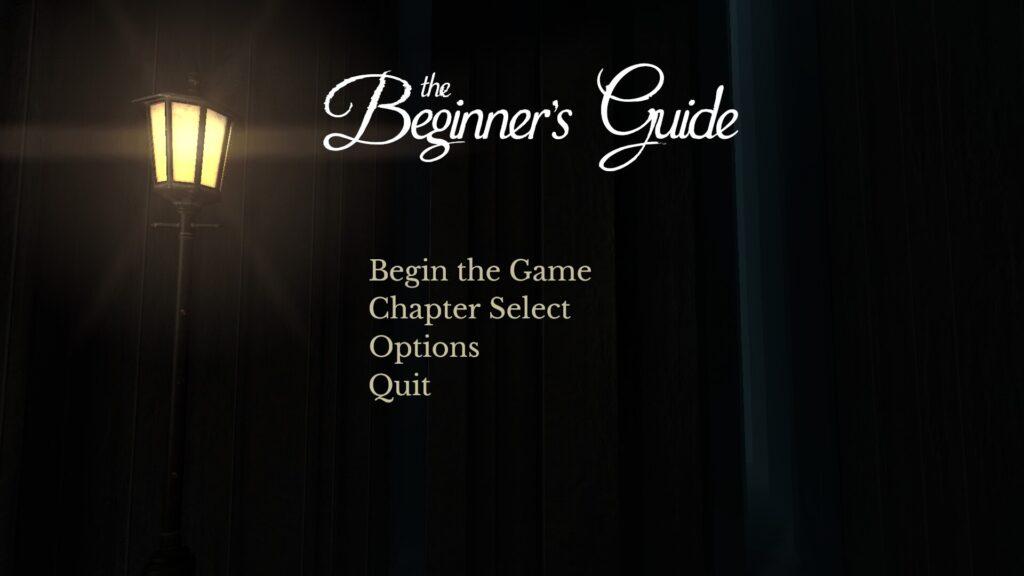
“The Beginner’s Guide is a narrative video game from Davey Wreden, the creator of The Stanley Parable. It lasts about an hour and a half and has no traditional mechanics, no goals or objectives. Instead, it tells the story of a person struggling to deal with something they do not understand.” That is the description of The Beginner’s Guide that can be found on its Steam page, and it’s pretty accurate! It’s disingenuously accurate; this description only alludes to the story and ignores how playing the game in and of itself turns this premise on its head, but it is still technically accurate. Unlike other walking simulators in which the player would have a very similar experience playing the game as they would watching a movie version of the story, The Beginner’s Guide utilizes the core fact that the player is an anonymous stranger who downloaded this game from the internet and is now walking around the inner mind of someone they do not know to guide them through a wide array of emotions that would be impossible to convey if this game were just a movie.
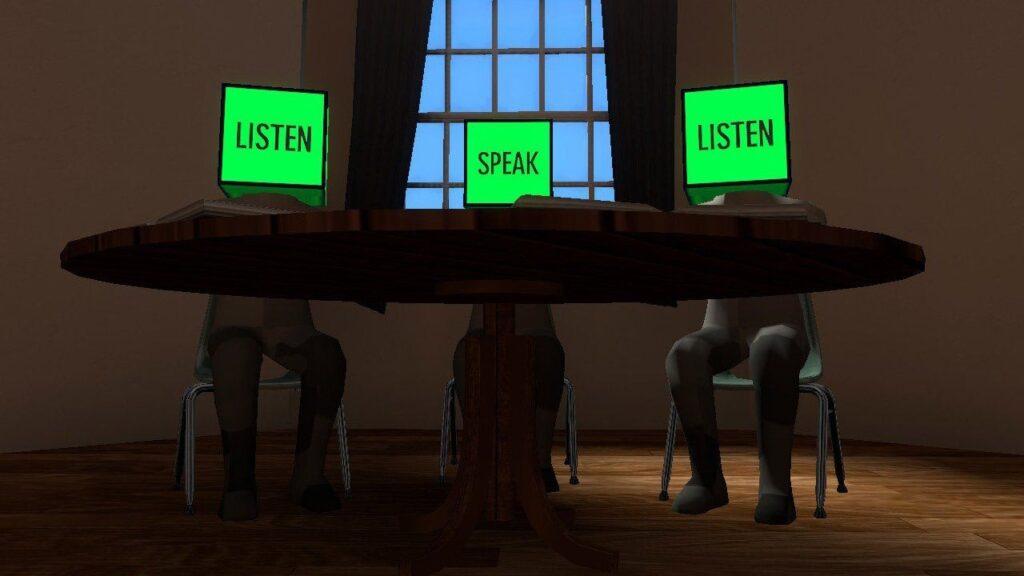
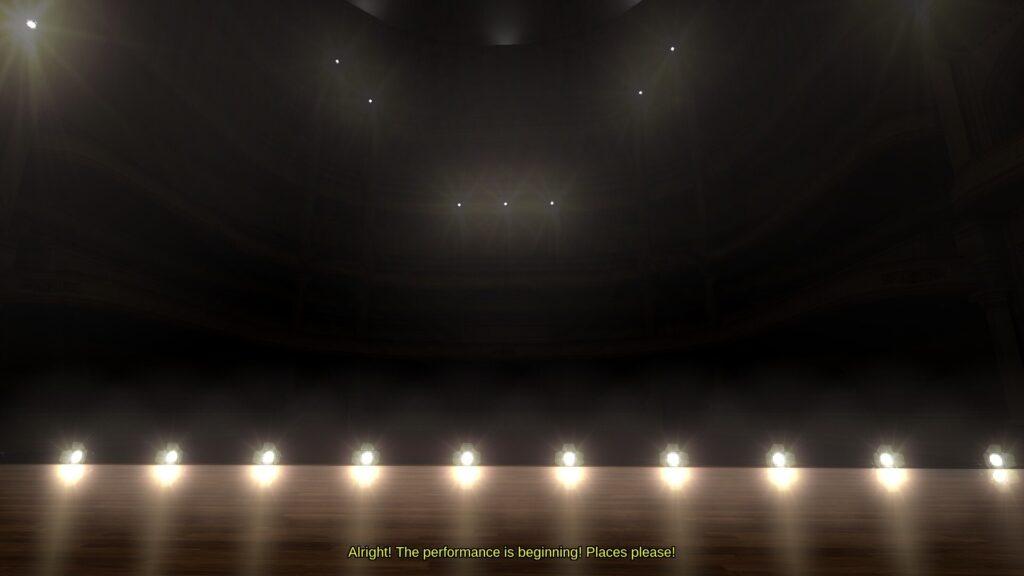
For the vast majority of walking simulators, the player is taken on a movie-like journey. The player could literally embody the character they are playing as–such as in Firewatch–or the player can be a director that influences the story–such as in The Stanley Parable. The Beginner’s Guide manages to do both at the same time; it invites the player into a collective outreach project and allows them to experience different works of art in their purest, most innocent form. All the while, they are guided through these works of art and provided interpretations by someone who did not actually make the art themselves. As the player continues to explore and walk around in the various environments presented to them, they begin to feel like they are beginning to understand the creator, their mental state, and sympathize with the narrator. Slowly, as the player walks around more and more, the game warps this notion and reveals more and more about the narrator’s motivations behind their collective outreach project. By the end, the player feels like an unwanted intruder that has been walking around and exploring the mind of someone who did not consent to their mind being explored. This 180 degree shift recontextualizes all of the environments they have explored thus far, all of the narrator’s interpretations, and all of the modifications they have had to make in order for this game to be “fun.”
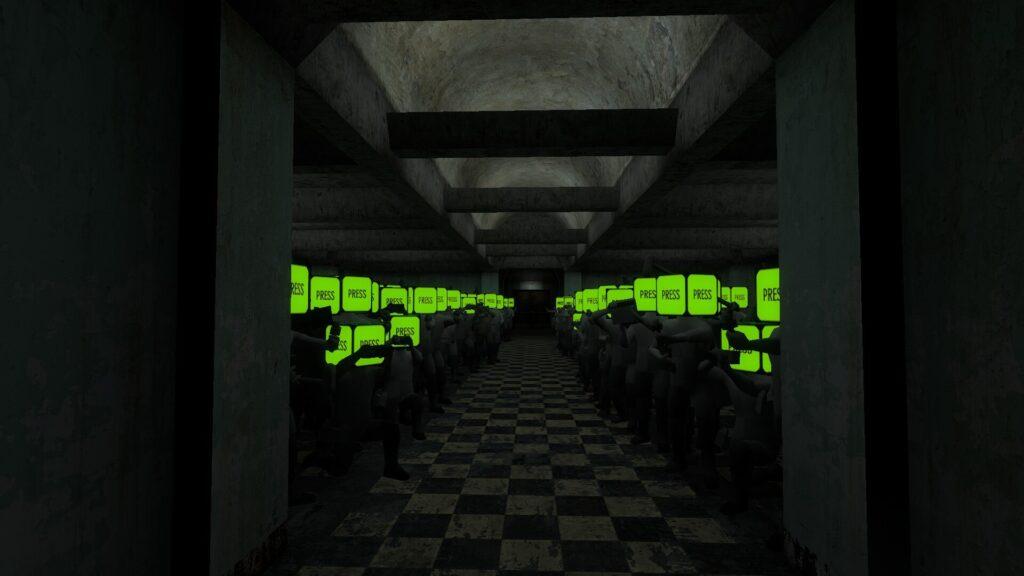

Every “level” expresses a different emotion, theme, or idea; the game as a whole covers an incredibly large swath of the human experience (at least, two people’s human experiences) in such an intimate, personal way that very few other games come close to doing. At the same time, all of this is conveyed purely through walking. Ironically, The Beginner’s Guide is the purest form of video games as an art form despite being the antithesis of what we read in Raph Koster’s Theory of Fun for Game Design. Referring back to the Steam description: “[The Beginner’s Guide] has no traditional mechanics, no goals or objectives. Instead, it tells the story of a person struggling to deal with something they do not understand.” Yet, unlike the story of nearly every other game, the story of The Beginner’s Guide only works BECAUSE it is a game. The same emotional weight cannot be conveyed if you just watch someone play this game or watch a movie-version of its story. Instead, the game requires the player to walk through each of these environments themselves, the game requires the player to think like a game designer and ask themselves why each environment was constructed the way that it was, and the game requires the player to ask themselves what it means to create art for oneself when you know others will perceive your art (and by extension, perceive you, too).
I believe that you should play The Beginner’s Guide at some point in your life whenever you feel like you’ve lost yourself or have lost the thing that made you creative, motivated, and who you are.
^ That shift in point of view was intentional. The Beginner’s Guide has a shift in its narrative, and it literally makes you stop walking and think for a moment in a way that is similar to what I hope my shift in point of view conveyed.
